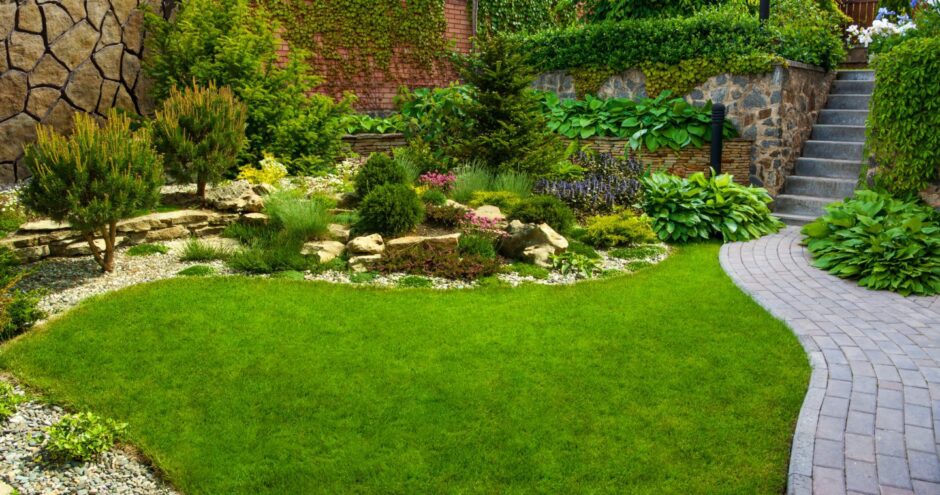My wee brain is spinning this week. Not in a bad way, it’s just that I’ve been involved in so many good things and talking about new projects that it’s just buzzing with the excitement of so much to plan and to look forward to in the coming months.
Autumn is probably my favourite season, late September especially, not only because of all there is to see and do in the garden just now but I’m starting to think more about all the various improvements and changes that I’ve been pondering over all spring and summer.
Decision time
Well, now it’s decision time, I need to make up my mind which ones I’m actually going to go for and start planning how and when I’m going to carry them out over the winter months, so all is ready for when the gardens spring back to life in the new year.
Planning my garden for next year was already taking place in my head way back in the spring of this year, before I’d even pulled out my first weed in anger.
That may seem quick as I’d yet to even feel the benefit of last winter’s changes but that’s the way it is with gardening, it’s never a finished piece of work.
Outdoor space always evolves
Whether that’s by the shrubs we’ve put in the ground now casting shade around it, perennials liking their home too much that they’re taking over, extending the veg plot so we start growing more from home, or getting rid of the high maintenance lawn for a low maintenance alpine garden.
Our outdoor space is always evolving, most of the time right in front of our eyes and is never the same two years in a row.
Through reading garden magazines, watching gardening programmes new and old on tv and getting about visiting and enjoying other peoples gardens, I’m always picking up new ideas and constantly taking notes.
In our garden now, before the cold weather and poor light levels finally put an end to this year’s display, its the perfect time to assess our gardens.
Pull all these notes together, no doubt written on the back of seed packets and left inside gardening magazines as a bookmarks to a useful article, study them whilst creating a vision in your mind of how you want your garden to look next year.
Jot down a master plan then start planning what jobs are to be done over the winter months to achieve this.
If you’re like me, you’re probably just itching to crack on now but it’s worth just taking our time to think these jobs through to make sure we’re taking full advantage of the short days of winter.
Some jobs do need to be done at certain times whilst others can be put back and saved for the end of winter, but don’t get too complacent either.
Can you take the risk?
Can you risk gambling on the winter weather which, if turns turns bad, may mean we miss out on getting anything done?
Last winter was the prime example for me. Weeks of thoughts and planning were literally blown out the glasshouse windows overnight with the arrival of Storm Arwen.
For many gardeners, the rest of the winter was spent clearing up the damage.
If you grow veg at home then the next few weeks are the optimum for preparing the soil for next year.
I’m a ‘no-dig’ veg grower, meaning after the last of the crops are cleared I’ll place a fresh layer of compost 7cm/ 2in thick on the surface.
Over winter the worms will do the rest, pulling this goodness down, creating drainage channels in the process for water to run away.
If it gets really wet I may decide to cover the bed with membrane to protect the structure of the soil from being washed away.
Sometimes we just need to crack on despite the weather, so try and avoid walking directly on wet soil and place a board down for walking or a few stones for stepping on.
It’ll save you a lot of hassle come spring when you just want to crack on but instead are having to fork over to aerate your soil.
Hands up, how many of us have stuck a plant in the ground and not paid attention to the label which tells us how big it’s going to get?
There’s so much we can do
I bet now it’s taken up the whole bed, or more likely soaking us as we brush past it on the way to the car.
There’s no point in fibbing, as I can see when I keek o’er the hedge when I’m having a nosey in your garden!
If it’s a deciduous shrub then never fear, winter months are the time of year when it can be lifted and shifted to a more suitable part of the garden. Just make sure you get your spacing right this time!
Use the winter months for creating a new path, or save yourself a few bob planting new hedges and trees, by buying them as bare rooted plants.
There’s so much we can be doing during winter keeping us active and our minds healthy so get planning now.




Conversation